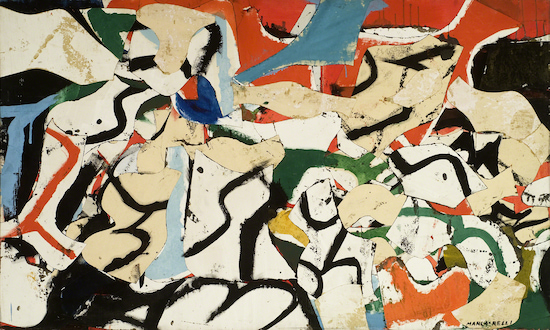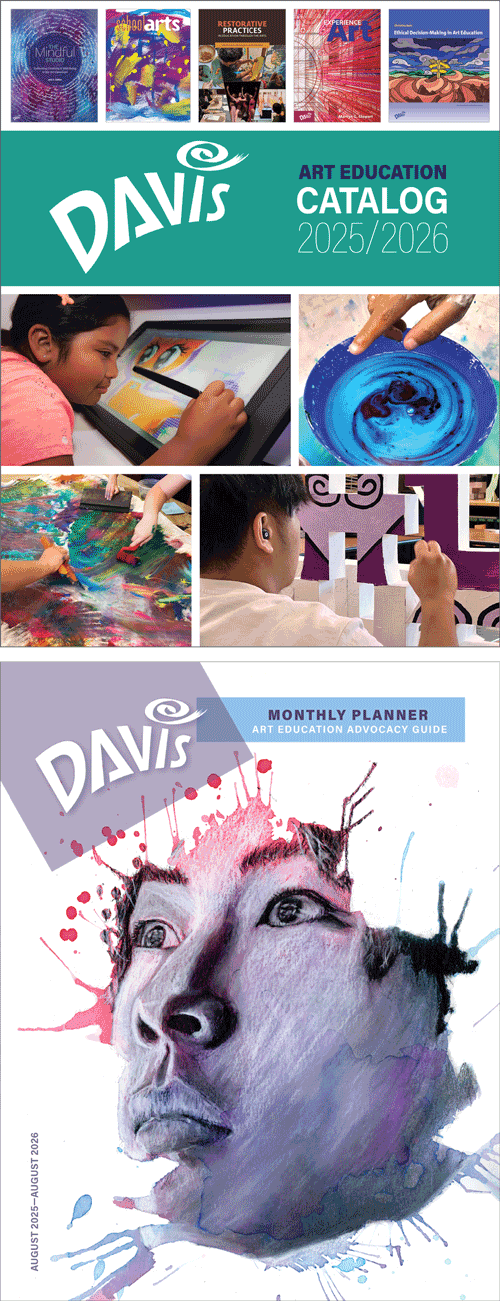Artist Birthday: Conrad Marca-Relli
Conrad Marca-Relli was part of the “first generation” of Abstract Expressionism, along with Jackson Pollock and Willem de Kooning. His artistic vision, however, was uniquely apart from either the action painting or color field strains of the movement. He is considered one of the first artists to reconcile collage and monumental scale painting, which paved the way for the Neo-Dada artists of the 1960s.
Artist birthday for 5 June: Conrad Marca-Relli (1913–2000, United States)
Conrad Marca-Relli was part of the first wave of Abstract Expressionism, and introduced collage into large-scale painting.
 |
| Conrad Marca-Relli, Conciliation, 1958. Canvas collage and oil on canvas, 101.5 x 168.8 cm. Hirshhorn Museum and Sculpture Garden, Smithsonian Institution, Washington, DC. © 2025 Artist or Estate of Artist. (SI-229) |
In 1953, a trip to Mexico caused him to experiment with collage due to a lack of painting materials. He used the collage elements to capture ideas of light, forms and textures, The process progressed to one in which he combined oil painting with cutout shapes and layered surfaces, interspersed with expressionistic brush work. In the late 1950s, Marca-Relli embarked on a series of works that were ambitious in their scale, complexity and color harmonies. With Conciliation, Marca-Relli abandoned his formerly subdued palette of off-white and ochre to introduce bold zones of color as a new formal element in his paintings. The jostling blue, red and yellow shapes and strips of torn, painted canvas convey a sense of energy and movement.
After the horrors of World War I (1914–1918), European artists found traditional forms of artistic expression—painting and sculpture—insufficient to express their repulsion to the "logic" that had led to such a devastating war. It engendered the development of Dada and Surrealism, art movements that questioned the very nature of art.
In 1942, when the US entered World War II (1939–1945), the prevailing styles of Social Realism and Regionalism seemed to progressive artists too weak and superficial to be expressions of the despair and outrage caused by the new war. The questioning, once again, of cultural values fomented the widespread investigation of current aesthetics of European modernism, particularly Surrealism, by American artists seeking more meaningful forms of expression.
This, combined with America's strong position after the war, compared to the devastation of European cultural centers, helped create a unique American school of modernism. With New York as the new center of the Western world in progressive art movements, led to the development of Abstract Expressionism, Color Field, and numerous subsequent original American modernist strains.
Born Corrado di Marcarelli in Boston, Marca-Relli was the son of Italian immigrants. His childhood was spent going back and forth to Europe with his journalist father. He began drawing at an early age, and his family encouraged his artistic interests. His first art lessons took place on one of his many trips to Italy. He developed there an enduring respect and love of the artistic heritage of Italy. His parents settled in New York permanently in 1926.
Marca-Relli finished high school with night courses so that he could paint during daylight. Except for one year of study at Cooper Union in 1930, Marca-Relli was primarily a self-taught painter. After establishing his own studio, he made a living teaching and producing commercial illustrations, but relied largely on mural painting during the Depression's Works Progress Administration's Federal Art Projects program. His work on the FPA not only broadened his personal painting techniques, but also introduced him to artists who would be key players in Abstract Expressionism --- Willem de Kooning (1904–1997), Jackson Pollock (1912–1956) and Franz Kline (1910–1962).
After serving in the war, Marca-Relli's early paintings of the late 1940s were starkly simplified, fantasy-like cityscapes and circus scenes, similar to the fantasy realm of Paul Klee (1879–1940). They involved the stacking of flattened forms in an overall decorative surface that had little reference to depth. By the early 1950s, he had developed a form biomorphic abstraction that used the same patchwork combinations of forms.

Comments